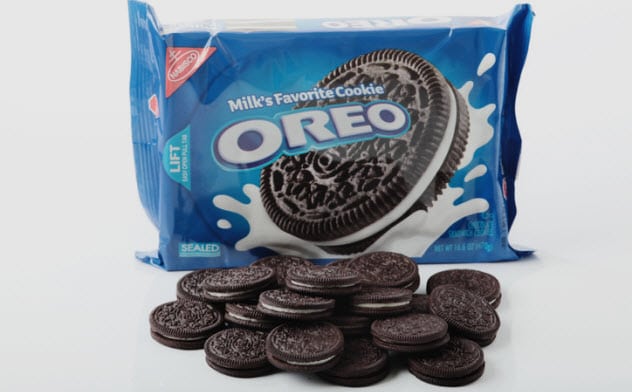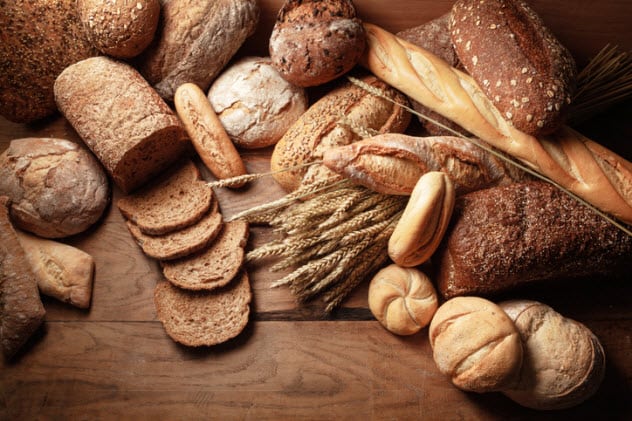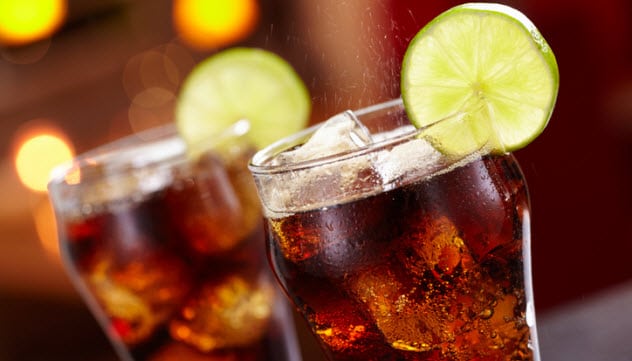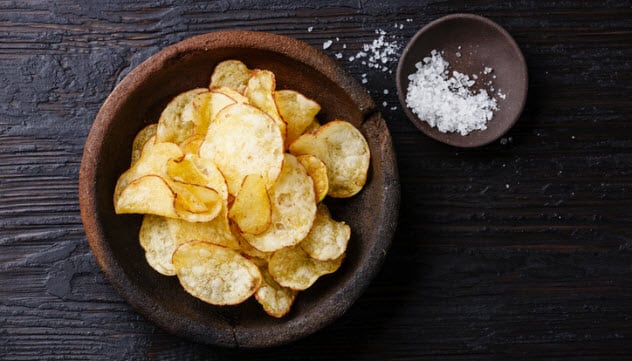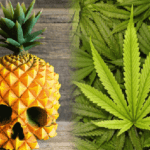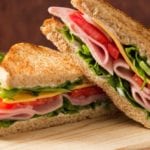Certain foods can also be addictive, with some even having the same chemical effects on our bodies as drugs. The result is that we become physically or mentally dependent on these foods and keep munching them to cure the ridiculous addictions.
10 Cookies
Consuming a large number of cookies might seem like a habit. But as we are about to find out, it could be the result of an addiction. In one study, Jamie Honohan of Connecticut College injected rats with either a saline solution or one of cocaine or morphine. Thereafter, he put the animals in a maze containing rice cakes and Oreos, leaving the rats to move around freely. He realized that the animals moved to the area containing the Oreos, which they clearly preferred to the rice cakes. They became excited after eating the cream filling of the Oreos, just as they remained excited when injected with the drugs.[1] Honohan later tested proteins from the rats and discovered that their accumbens—which is known as the “pleasure center” of the brain—was more excited when they ate Oreos than when they were injected with cocaine.
9 Wheat
Wheat is an addictive food that no one seems to notice. One of its properties is high gluten content, making “gluten free” the catchphrase for supposedly healthy wheat foods. However, consuming large quantities of wheat is unhealthy, whether it contains gluten or not. Today’s product is not the same as the wheat of the past. Instead, modern wheat is the result of genetic engineering that has been going on for about 50 years. It is called “FrankenWheat” for this reason. It contains lots of starch, gluten, and addictive proteins that keep you coming back for more. When consumed, these addictive proteins are broken down into polypeptides, which attach to brain receptors to make consumers high and addicted. Polypeptides also get into the bloodstream. At this point, they are called gluteomorphins, which is just a name derived from “gluten” and “morphine.”[2] Wheat addicts will always crave more sweet wheat products like cookies and cakes. Interestingly, wheat addiction can be treated with drugs like naloxone, which doctors use to cure heroin or morphine overdose. Besides the addiction, wheat has been linked to cancer, obesity, heart disease, and several other medical disorders.
8 Meat
Meat is a natural and good source of animal protein. As a result, it is hard to distinguish between a person addicted to meat and someone who just needs its protein content. Meat contains hypoxanthine, a caffeine-like stimulant that makes us feel satisfied. Hypoxanthine even has the same properties as caffeine. Older meat contains more hypoxanthine, which is why some people exhibit withdrawal symptoms and a serious craving for this type of food if they do not eat it for a while.[3] Meat contains other addictive substances like guanylic and inosinic acids, which have the same effect as hypoxanthine. Worse yet, once you are addicted to hypoxanthine, you will need to consume more meat to reach the same level of satisfaction.
7 Ice Cream
Ice cream arouses the same part of our brain as drugs. Over time, we will need to eat more ice cream to maintain that arousal. When we don’t, we become depressed, just as drug addicts do when they do not get drugs. Kyle S. Burger and Eric Stice from the Oregon Research Institute studied the effect of ice cream addiction on the human brain. While scanning the brain activity of 151 teens, the researchers showed these young people a cartoon of a milkshake to measure their cravings before giving them actual milkshakes to consume during the scans. The researchers noticed that the teens who had consumed a lot of ice cream in the weeks leading to the study were not as excited by having a milkshake as those who hadn’t eaten much ice cream previously. This was measured by activity in the brain’s pleasure center while having a milkshake. As with using hard drugs, the teens who ate ice cream prior to the study needed more milkshakes to reach the same level of satisfaction as those who did not eat ice cream before the study.[4]
6 Cheese
Cheese is another addictive food we shove down our throats from time to time. It is found in many junk foods including pizza. It could even be the reason why some of us are addicted to pizza. This is because cheese contains the opiate molecules casein and casomorphins.[5] Casomorphins are fragments of casein and have the same effect as morphine in the body. They attach themselves to the brain receptors that drugs like morphine and heroin do. In response, the brain releases dopamine in the same way as when someone takes drugs. Cheese makers know these facts and take advantage of them to sell more of their products. Although cheese will not turn you into a crackhead, it will make you high and addicted, although at a lower level than drugs.
5 Sugar
Like every other food, sugar can be healthy or unhealthy depending on how it is used. Unlike every other food, it can also become addictive. A study by researchers at Queensland University of Technology discovered that sugar has the same effect on the body as cocaine. Both make the body release dopamine. Over the long term, the amount of dopamine released becomes smaller compared to the amount of cocaine or sugar consumed, leading addicts to want more. When a sugar addict does not get enough sugar to trigger the release of dopamine, he could fall into depression in the same way that cocaine users feel when they cannot get the drug. When sugar addicts stop eating sugar, they may exhibit withdrawal symptoms just like cocaine users. Another study by Dr. James DiNicolantonio found that sugar is even more addictive than cocaine. In the study, rats addicted to cocaine switched to sugar after tasting it for the first time. The relationship between sugar and drugs becomes much closer when we realize that the Food and Drug Administration has approved varenicline, the same drug used to treat nicotine withdrawal, to treat sugar withdrawal.[6] However, an earlier study by researchers from Edinburgh University concluded that sugar addiction is actually a behavioral problem and not an addiction. In essence, people consume sugar because they love it and not because they are addicted to it. In fact, their research claims that it is impossible to become addicted to sugar.
4 Coffee
The United States tops every other nation in caffeine consumption. The average American drinks three cups of coffee a day, and that is without counting their intake from other products like energy drinks and soda. Why do Americans drink so much coffee, you might ask? It could be the result of an addiction.[7] This beverage contains caffeine, which has been crowned the “world’s most addictive and widely used drug.” It triggers the release of dopamine, making us feel good in the same way that drugs make users feel good. Caffeine also causes a serious addiction that can only be cured by drinking more coffee.
3 Soda
Some sodas like Pepsi and Coca-Cola are irresistible because they contain caffeine, which is super addictive. So even if you do not drink coffee, you can still get caffeine in cola. Research indicates that 80 percent of Americans consume caffeine in one way or another every day. Caffeine in cola enters the bloodstream and the brain where it disrupts the adenosine receptors responsible for slowing down the nerve cells in the brain. When this happens, our body goes into a state of alertness and releases adrenaline, which is usually released naturally when we are in danger. The body soon realizes that there is no danger and creates more adenosine receptors to block the effects of the cola. The drinker, who is already addicted at this point, is then forced to consume more soda to reach the same level of satisfaction as before. Besides caffeine, soda has been criticized for containing caramel coloring, phosphoric acid, and plenty of sugar or high-fructose corn syrup.[8] A can of Coca-Cola has 10 teaspoons of sugar or high-fructose corn syrup, which causes diabetes in the long run. Caramel coloring has been linked to cancer, and phosphoric acid is just too acidic at a pH of 2.5. For comparison, car batteries have a more acidic pH of 1 and water has a neutral pH of 7. Phosphoric acid in soda does not damage our stomachs because the stomach digests this acid with the aid of calcium phosphate from our bones. This could cause bone problems like fracture and osteoporosis in the long run.
2 Potato Chips
Have you ever wondered why it is so hard to quit eating those bags of potato chips? According to a study, this is because they are as addictive as hard drugs. So once you pop the contents of a bag of chips, you might not stop. Like cheese, potato chips trigger the release of dopamine that messes with our bodies and gives us the same effect as drugs do for users. Research by Dr. Tony Goldstone of Imperial College London revealed that pictures of potato chips and junk foods in general excited the same part of the brain as images of alcohol do for boozers and pictures of drugs stimulate for drug users.[9]
1 Chocolate
Chocolate turns out to be another innocent food as addictive as drugs. This is because it contains sugar, fats, theobromine, and enkephalin, the caffeine of the cacao world. Theobromine and enkephalin are stimulants. Theobromine is known to trigger the expansion of our blood vessels and a drop in our heart rate and blood pressure to create a relaxing feeling, just like drugs. The effects of enkephalin need more study because most of the relevant research was done on rats. However, unlike rats, humans are not easily influenced by enkephalin. Researchers discovered that rats fed M&M’S candies experienced a spike in enkephalin secretion, which excited the opioid receptors of the brain just like heroin and morphine. At the same time, this made the rats crave more chocolate to keep the secretion going.[10]
